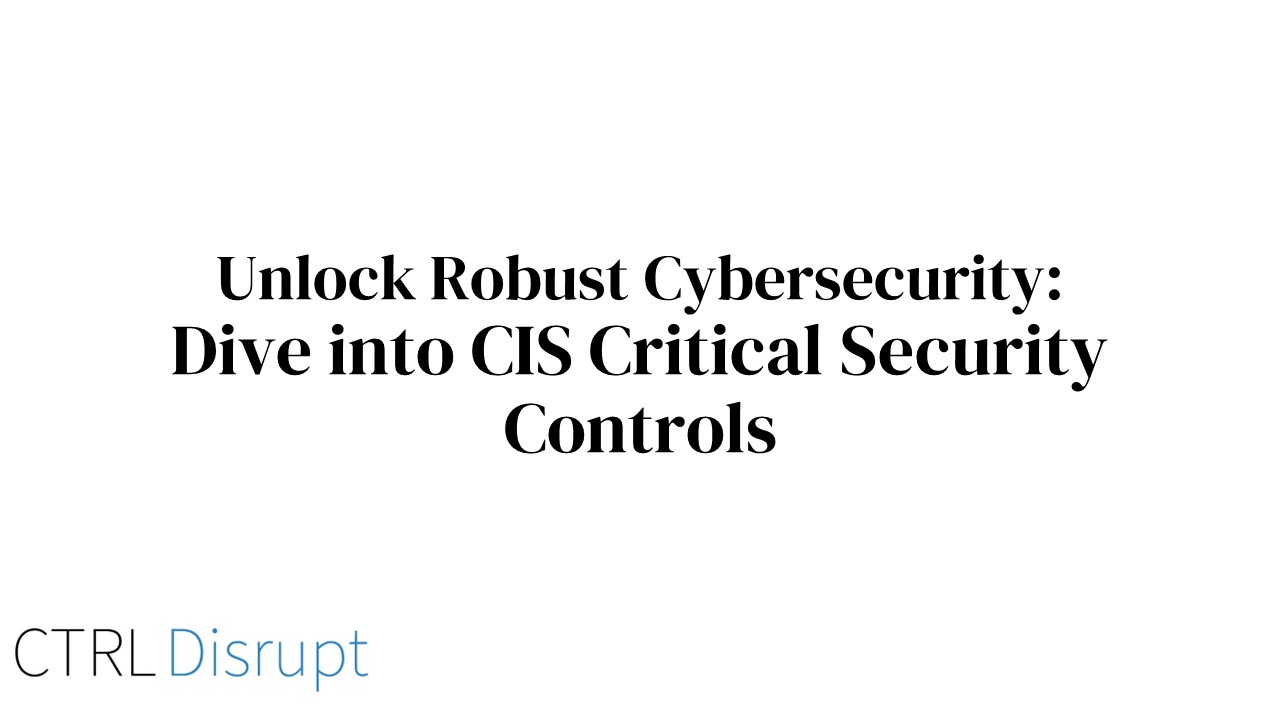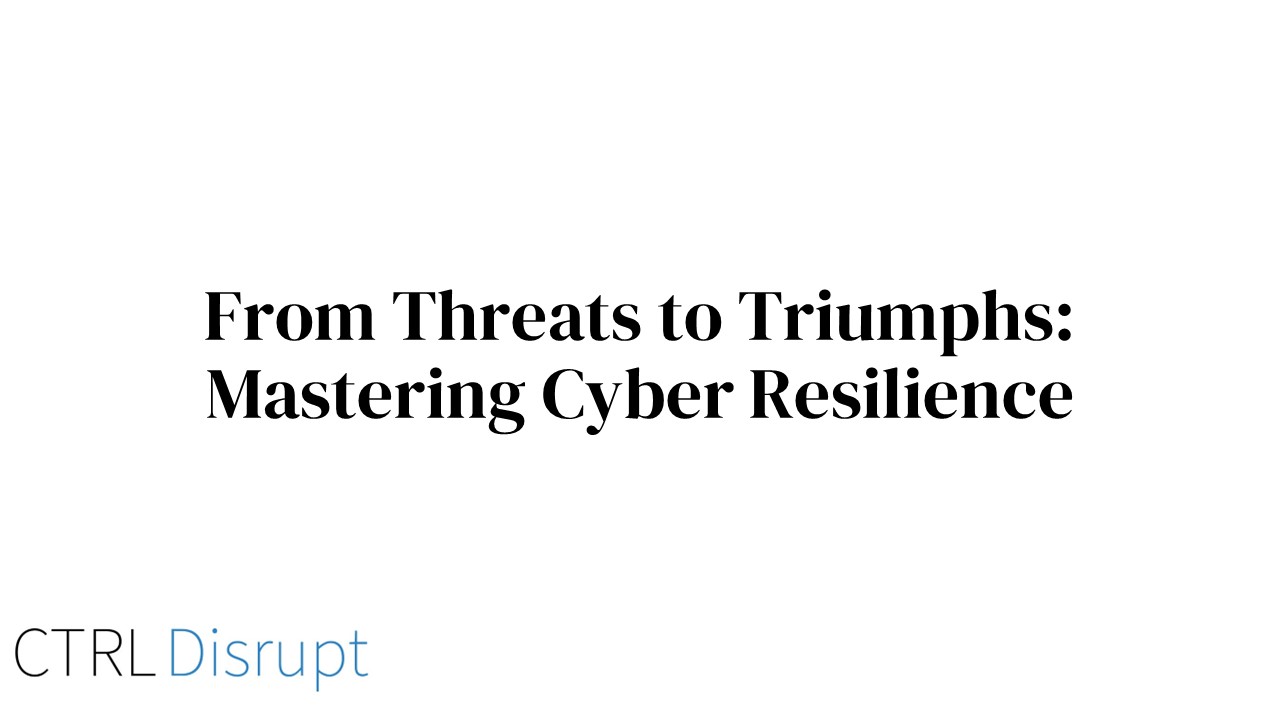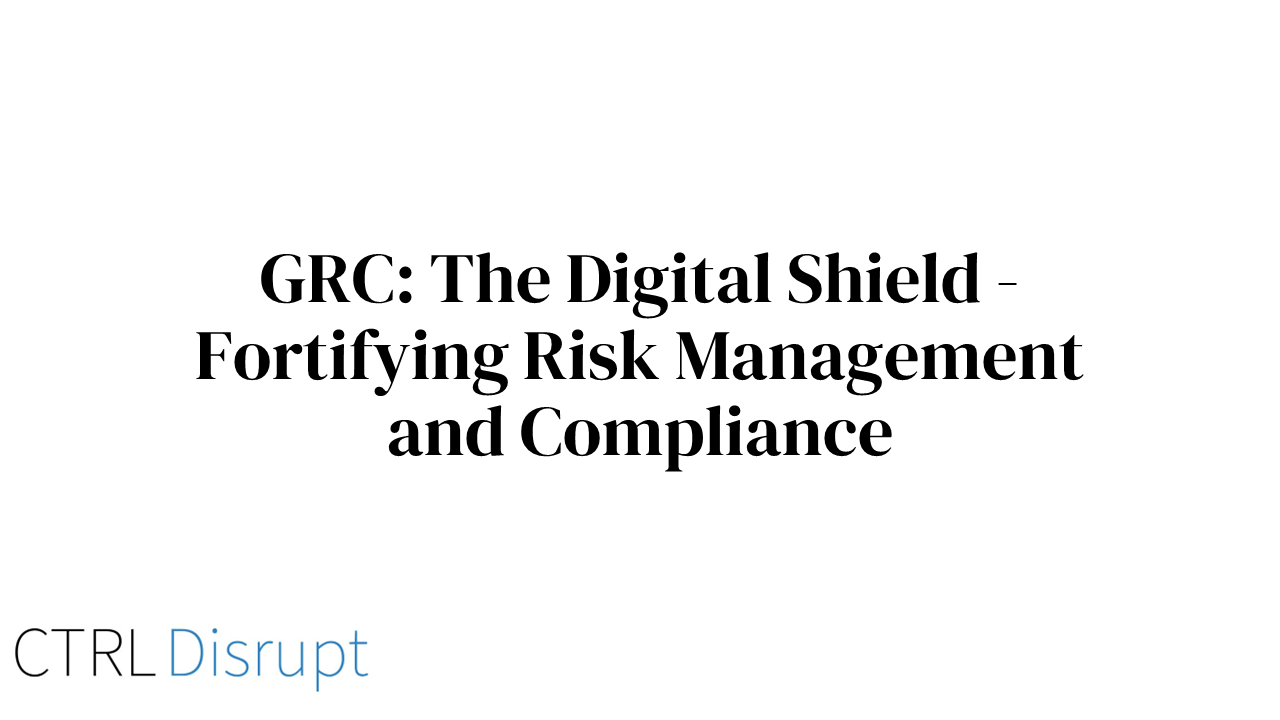Cybersecurity Governance: The Key to Sustained Digital Resilience
Explore the essentials of effective cybersecurity governance and how it fortifies digital resilience in organizations against evolving cyber threats
1. Introduction
In today's interconnected world, where digital technologies permeate every aspect of our personal and professional lives, the importance of cybersecurity can hardly be overstated. From multinational corporations to small businesses, the reliance on digital infrastructure has never been greater, nor have the threats to its security. Cyber-attacks are becoming more sophisticated, frequent, and damaging, making robust cybersecurity measures a critical need rather than a mere option.
At the heart of addressing this modern challenge is the concept of cybersecurity governance. This framework encompasses the strategies, policies, and processes that guide and control how an organization's information and digital assets are protected. Cybersecurity governance is not just about implementing technical solutions; it’s about creating a culture of security awareness, defining roles and responsibilities, and ensuring that cybersecurity practices align with the overall objectives and risk appetite of the organization.
The thesis of this discussion is straightforward yet profound: effective cybersecurity governance is not just a component of organizational strategy; it is the foundation upon which sustained digital resilience is built. In an era where cyber threats are an ever-present and evolving risk, the ability of an organization to anticipate, respond to, and recover from these threats hinges on the robustness of its governance framework. Without effective governance, even the most advanced cybersecurity technologies and practices may fall short in safeguarding digital assets.
As we delve deeper into the nuances of cybersecurity governance, we will explore its key components, the challenges in implementing it, and how it forms the backbone of digital resilience in organizations. The goal is to provide a comprehensive understanding of why cybersecurity governance is not just a necessary element of risk management but an indispensable aspect of thriving in the digital age.
2. Understanding Cybersecurity Governance
2.1 Definition and Components of Cybersecurity Governance
Cybersecurity governance can be defined as the system by which an organization directs and controls its cybersecurity efforts. This system encompasses a broad range of components:
-
Policy Framework: The set of policies that define how an organization manages and protects its digital assets. This includes guidelines for data protection, user access control, and incident response protocols.
-
Roles and Responsibilities: Clear delineation of cybersecurity roles and responsibilities throughout the organization to ensure accountability and efficient response to cyber incidents.
-
Risk Management Framework: A structured approach to identifying, assessing, and managing cybersecurity risks. This involves regular risk assessments and the implementation of measures to mitigate identified risks.
-
Compliance and Legal Requirements: Adherence to legal and regulatory standards related to cybersecurity, such as GDPR for data privacy or industry-specific regulations.
2.2 The Difference Between Cybersecurity Governance and Cybersecurity Management
While often used interchangeably, cybersecurity governance and cybersecurity management are distinct concepts:
-
Cybersecurity Governance: Focuses on the establishment of policies and frameworks that guide cybersecurity efforts. It is strategic in nature, involving decision-making at the highest levels of the organization about the direction, scope, and objectives of cybersecurity initiatives.
-
Cybersecurity Management: Deals with the implementation and execution of the policies and frameworks established by governance. It is more tactical and operational, focusing on day-to-day activities such as monitoring security systems, responding to incidents, and updating defenses.
2.3 The Role of Leadership and Organizational Structure in Cybersecurity Governance
Effective cybersecurity governance is significantly influenced by an organization's leadership and structure:
-
Top-Down Leadership: Strong commitment from top management, including the board and C-suite executives, is crucial. Their involvement and support lend authority to cybersecurity initiatives and ensure alignment with overall business objectives.
-
Cross-Functional Collaboration: Cybersecurity governance should be a collaborative effort involving various departments such as IT, legal, HR, and operations. This ensures a holistic approach to cybersecurity that aligns with all aspects of the organization.
-
Clear Communication Channels: Establishing clear lines of communication for reporting and decision-making related to cybersecurity. This includes regular updates to the board and executive team on cybersecurity matters.
In summary, cybersecurity governance is a comprehensive framework that guides an organization in protecting its digital assets. It differs from management in its strategic focus and requires strong leadership and a collaborative organizational structure to be effective. By understanding these aspects, organizations can better position themselves to address the complex challenges of cybersecurity in the digital age.
3. The Pillars of Cybersecurity Governance
Effective cybersecurity governance is a multifaceted endeavor that is essential for ensuring an organization's digital security and resilience. This governance is built on several key areas, each crucial to creating a comprehensive defense against the myriad of cyber threats faced by organizations today.
3.1 Developing Comprehensive Cybersecurity Policies
The journey begins with the development of tailored cybersecurity policies. These policies are crafted to address the unique needs and contexts of each organization, covering critical aspects such as data protection, network security, and access control. However, it's not enough for these policies to be technically robust; they must also align seamlessly with the organization's overall business objectives and strategy. This alignment ensures that cybersecurity efforts bolster, rather than hinder, business growth and innovation.
3.2 Proactive Risk Management
Risk management in cybersecurity is a proactive and ongoing process. It involves regularly conducting thorough assessments to identify potential threats and vulnerabilities within the organization's digital landscape. But identification is just the first step. What follows is the development and implementation of strategies designed to mitigate these risks, such as encrypting sensitive data, deploying firewalls, and conducting regular security audits. Alongside these efforts, there is a continuous process of monitoring and updating the risk management plan to adapt to new threats and changes within the organization.
3.3 Strategic Resource Allocation
Effective cybersecurity governance also hinges on the strategic allocation of resources. This includes not just the budget, which covers technology solutions, staff training, and incident response measures, but also the human resources aspect. Investing in skilled cybersecurity personnel, through both hiring experts and providing ongoing training to existing staff, is crucial. Alongside this, there is a focus on technological investments, ensuring the acquisition and maintenance of state-of-the-art cybersecurity technologies and infrastructure.
3.4 Compliance and Legal Considerations
Staying abreast of and complying with relevant cybersecurity laws and regulations, such as GDPR for data protection, is another pillar of cybersecurity governance. But it goes beyond mere compliance; it's about upholding high ethical standards in all cybersecurity practices. This commitment extends to maintaining comprehensive documentation and reporting, which is vital for both internal monitoring and regulatory compliance purposes.
3.5 Robust Incident Response and Recovery
Finally, a resilient cybersecurity governance framework includes well-defined incident response protocols and recovery plans. These protocols are regularly updated to ensure swift and effective action in the event of a breach. Additionally, recovery plans are put in place, outlining the steps to restore systems and data following an incident. Regular training and simulation drills for the cybersecurity team and relevant staff are crucial to ensure preparedness for any potential cyber incidents.
By diligently developing and implementing strategies across these key areas, organizations can forge a robust defense against cyber threats, safeguarding their digital assets and maintaining the trust of their stakeholders. This comprehensive approach is what makes cybersecurity governance an integral part of the modern organizational structure.
4. Implementing Effective Cybersecurity Governance
Implementing a robust cybersecurity governance framework is not a one-time effort but an ongoing process that evolves with the organization and the cyber threat landscape. This journey involves several key stages and requires active participation from all levels within the organization.
4.1 Establishing the Foundation
The process begins with an initial assessment, a critical step where the current state of cybersecurity measures is thoroughly evaluated. This includes examining existing policies, practices, and infrastructural security. Based on this assessment, the organization can set clear and achievable goals for the cybersecurity governance framework. These goals should align with the organization’s overall risk appetite and business objectives.
4.2 Developing the Governance Structure
A crucial next step is to develop a governance structure. This often involves establishing a dedicated board or committee responsible for cybersecurity governance, ensuring that roles and responsibilities are clearly defined and understood. Part of this structure’s task is to formulate and gain approval for cybersecurity policies and procedures, ensuring they comply with regulatory requirements and are attuned to the organization’s needs.
4.3 Engaging Stakeholders and Effective Communication
Effective cybersecurity governance requires buy-in from the entire organization. Engaging stakeholders, from executives to front-line staff, is essential for successful implementation and compliance. This engagement is bolstered by effective communication strategies that ensure cybersecurity policies and updates are disseminated clearly and consistently throughout the organization. Moreover, regular training and awareness programs are vital in keeping all employees informed and vigilant about cybersecurity risks and best practices.
4.4 Continuous Improvement and Adaptation
One of the hallmarks of effective governance is its dynamic nature. It involves continuous monitoring to ensure the measures in place are effective. Regular reviews and audits are also vital, serving as opportunities to identify and address areas for improvement. In today’s fast-evolving digital world, staying abreast of emerging threats and technological advancements is critical. The governance framework must be flexible and adaptable, ready to evolve in response to new challenges and advancements in the cybersecurity field.
In conclusion, the implementation of effective cybersecurity governance is a comprehensive and continuous process. It requires a solid foundation, clear communication, stakeholder engagement, and an adaptable approach to meet the ever-changing demands of digital security.
5. Challenges in Cybersecurity Governance
Implementing effective cybersecurity governance is fraught with challenges that organizations must navigate. These obstacles can vary from budget constraints to the rapid evolution of cyber threats and the scarcity of skilled cybersecurity professionals.
5.1 Identifying Common Obstacles
One of the primary challenges faced by organizations is budget constraints. Cybersecurity requires substantial investment in technology, personnel, and training, which can be daunting, especially for smaller organizations or those with limited resources. Additionally, the cybersecurity landscape is ever-changing, with new threats emerging continuously. Keeping up with these evolving threats requires agility and constant vigilance, which can be taxing for any organization. Furthermore, there is a well-documented gap in skilled cybersecurity professionals. Finding and retaining individuals with the necessary expertise is a significant hurdle that can impede the effectiveness of cybersecurity governance.
5.2 Strategies for Overcoming Challenges
Despite these challenges, there are strategies that organizations can employ to enhance their cybersecurity governance:
-
Leveraging Technology and Automation: With budget constraints, organizations can turn to technology and automation to bolster their cybersecurity efforts. Automated security systems and AI-driven threat detection can provide cost-effective solutions that supplement human efforts.
-
Staying Informed and Agile: To keep up with rapidly evolving threats, organizations need to remain informed and agile. This can be achieved through regular training, attending cybersecurity conferences, and subscribing to threat intelligence services. Staying updated enables organizations to anticipate and respond swiftly to emerging threats.
-
Building a Culture of Cybersecurity Awareness: A significant part of cybersecurity governance involves creating a culture of awareness within the organization. Regular training and awareness programs for all employees can significantly reduce risks and do not necessarily require heavy investment.
-
Partnerships and Collaborations: For many organizations, especially smaller ones, forming partnerships with cybersecurity firms or participating in industry collaborations can provide access to expertise and resources that would be otherwise unattainable.
-
Investing in Talent Development: To address the shortage of skilled professionals, organizations can invest in developing internal talent. Offering training and certification opportunities to existing employees can help build a skilled cybersecurity team over time.
In conclusion, while the challenges in implementing effective cybersecurity governance are significant, they are not insurmountable. With strategic planning, leveraging technology, fostering a culture of cybersecurity awareness, and seeking collaborative opportunities, organizations can overcome these obstacles and establish robust cybersecurity governance.
7. The Future of Cybersecurity Governance
As we look towards the future, the landscape of cybersecurity governance is poised to evolve significantly, influenced by emerging technological trends and the changing nature of digital threats. Understanding these trends and their implications is crucial for organizations aiming to maintain robust cybersecurity governance.
7.1 Emerging Trends in Cybersecurity
Several key technological advancements are reshaping the cybersecurity landscape:
-
Artificial Intelligence (AI) and Machine Learning (ML): These technologies are revolutionizing the way cybersecurity systems identify and respond to threats. AI and ML can analyze vast amounts of data to detect patterns and predict potential breaches, offering a more proactive approach to threat detection.
-
Internet of Things (IoT): The proliferation of IoT devices expands the attack surface for cyber threats, introducing new vulnerabilities. Governance strategies must adapt to encompass the security of a growing array of connected devices.
-
Blockchain and Decentralized Security Models: Blockchain technology offers new ways to secure data through decentralized and tamper-resistant ledgers. Its adoption could significantly impact how data integrity is maintained within organizations.
-
Cloud Security: As more organizations migrate to cloud-based solutions, the governance of cloud security becomes increasingly critical. This includes addressing the shared responsibility model and ensuring data security in multi-cloud environments.
7.2 The Evolving Role of Cybersecurity Governance
In response to these emerging trends, the role of cybersecurity governance is also evolving:
-
From Reactive to Proactive: Traditional governance models often focus on reactive measures. The future lies in proactive governance, where predictive analytics and real-time monitoring play a significant role in preemptive threat mitigation.
-
Greater Emphasis on Privacy and Compliance: With the increasing focus on data privacy, governance frameworks must prioritize compliance with evolving data protection regulations, such as GDPR and CCPA.
-
Integrated Risk Management: Cybersecurity governance is moving towards a more integrated risk management approach, where cybersecurity risks are considered alongside other organizational risks for a holistic view.
-
Empowering a Culture of Security: Future governance models will likely emphasize building a strong organizational culture around cybersecurity, where security awareness and best practices are ingrained in every aspect of the business operation.
In conclusion, the future of cybersecurity governance will be marked by rapid technological advancements and a shift towards more proactive and integrated approaches. Staying ahead of these trends and adapting governance strategies accordingly will be key to ensuring digital resilience in an increasingly complex and interconnected digital world.
8. Conclusion
As we conclude our exploration of cybersecurity governance, it's clear that in the ever-evolving digital landscape, robust governance is not just an asset but a necessity. The journey through the various facets of cybersecurity governance has revealed its integral role in safeguarding organizations against an array of digital threats, underscoring its importance in sustaining digital resilience.
8.1 Recap of the Main Points
We have seen that cybersecurity governance involves more than just implementing technological defenses; it's about crafting comprehensive policies, managing risks, allocating resources efficiently, ensuring compliance, and being prepared for incidents. Effective governance requires a holistic approach, involving every level of the organization, from top leadership to individual employees.
8.2 The Ongoing Importance of Adapting and Strengthening Cybersecurity Governance
The digital world is not static, and neither are the threats that inhabit it. As such, cybersecurity governance must be dynamic, capable of adapting to new challenges posed by advancements like AI, IoT, and cloud computing. The future of cybersecurity governance will demand a proactive stance, integrating emerging technologies and trends into governance strategies, and constantly revisiting and refining these strategies.
8.3 Call to Action
In light of these insights, it's imperative for organizations to prioritize and invest in robust cybersecurity governance. This investment is not merely a defense mechanism but a strategic move that ensures long-term sustainability and resilience. Organizations must stay vigilant, adaptable, and committed to continuous improvement in their cybersecurity governance practices.
The digital age presents both immense opportunities and significant risks. By embracing and continuously strengthening cybersecurity governance, organizations can protect their assets, maintain the trust of their stakeholders, and navigate the digital future with confidence.

 By
By


